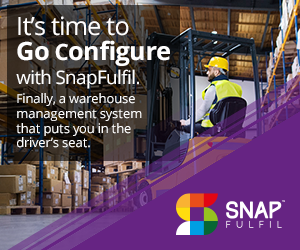Why downtime is the best time to gear up for the future with cloud-based WMS
While the wheels of commerce are inevitably slowing down for many during this international COVID-19 crisis, some continue to thrive despite the challenges and difficult decisions being taken.
Thankfully, there are even uplifting stories of businesses adapting and refocusing their core product offer to do good and help their customers, employees and communities through these unprecedented times.
For example, at SnapFulfil we have been working with Royal Devon & Exeter Hospital (RDEH) to support their big spike in stock visibility requirements, as they extend their warehouse capacity and take delivery of vital equipment to manage the influx of coronavirus patients.
With immediate effect, we have enabled six additional admin users to access the stock figures from any laptop and continue to liaise with storage personnel to add a new zone in which to record the latest stock. We are also in discussions to write new rules to assist in more efficient picking from this temporary space.

I don’t mention this to blow our own trumpet, but I think it is a great example of the true flexibility and adaptability of a cloud-based WMS. In the case of RDEH they have been hit by a tsunami of demands and are counting their blessings they have the software technology and a ready and willing partner to help them seamlessly through this momentous logistics challenge.
Equally, we have clients who are slowing down and taking advantage of the situation to plan and review their business strategy and goals, which has struck a chord that now might be a good time to implement a WMS.
From experience, many businesses put off the decision to move from a traditional WMS to a cloud-based solution because when they are operating at capacity, they feel there isn’t enough time to plan for change.
That’s why downtime could in fact be the best time to gear up for life after the pandemic – because that will happen and when it does, it will be those businesses with the infrastructure in place to move quickly and nimbly to meet the demands of the post COVID-19 world that are most likely to hit the ground running.
The truth is, with almost fully remote implementation it’s possible to have a cloud-based WMS like SnapFulfil operational in 45 days or less and it’s not expensive to set in motion, or difficult to realign.
Being fully integrated also helps reduce the footprint required for storage and with configurability built in – as demonstrated with RDEH – it meets the unpredictability of today’s world of commerce.
It is not only intuitive and scalable, it also has the capacity to adapt and evolve with customer service innovations such as distributed order management, waveless and priority based order processing and optimal returns processing.
Moreover, it uses rich functionality and real-time management software to help optimise inventory, space and labour in the warehouse. Users typically benefit from efficiency and productivity improvements up to 30%, which basically translates into the ability to do more for less with the same resources – something we are all craving during these hugely uncertain times.
So, while your warehouse operations might be slowing down, it’s also an opportunity to take stock, plan and overhaul your WMS – from the comfort of your home – so that you are fit and ready for action when the tide turns.



